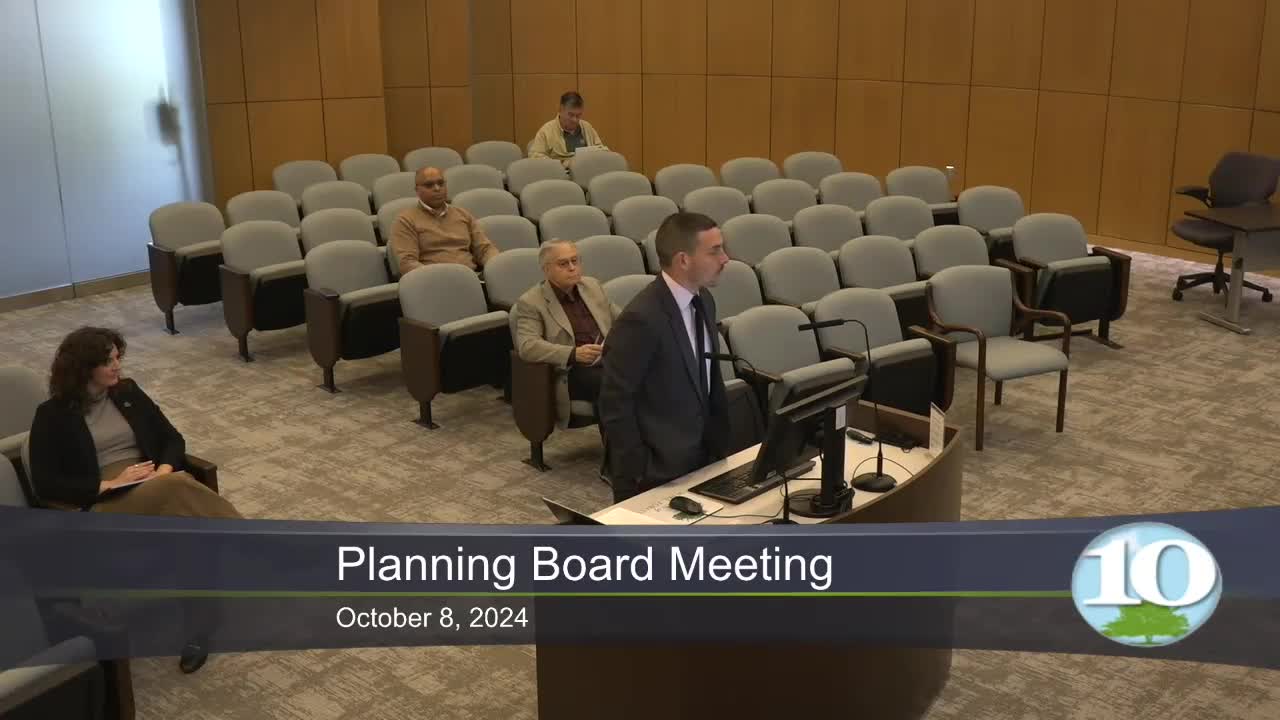Downtown plan reveals bold vision for revitalization
October 08, 2024 | Wake Forest, Wake County, North Carolina
This article was created by AI summarizing key points discussed. AI makes mistakes, so for full details and context, please refer to the video of the full meeting. Please report any errors so we can fix them. Report an error »

In a recent government meeting, the consulting firm Hauser Levine presented the revised downtown plan for Wake Forest, marking a significant step towards finalizing the community's vision for its urban landscape. The firm, in collaboration with City Collective, Noelle Consulting, and Tool Design, has engaged the public extensively throughout the planning process, gathering over 1,020 points of engagement, including feedback from more than 700 survey participants and two community open houses.
The downtown plan, which is now in its final stages, aims to address various aspects of urban development, including building heights, land use, mobility, and public realm enhancements. A notable concern raised by community members was the potential impact of increased building heights on the character of Historic White Street. To alleviate these concerns, the team introduced an immersive video game experience that allowed participants to visualize proposed developments and their effects on the downtown environment.
The plan is structured into seven chapters, covering topics such as land use, mobility, and public space. Key highlights include a focus on pedestrian-friendly infrastructure, with recommendations for wide sidewalks and street amenities on White Street, identified as the civic core. The mobility framework emphasizes the importance of accommodating cyclists and vehicles while promoting public transit options, including a proposed mobility hub.
The plan also outlines specific opportunity and catalyst sites for redevelopment. Opportunity sites include locations for mixed-use buildings with residential and commercial spaces, while catalyst sites are identified as having the potential to significantly impact downtown revitalization. Noteworthy proposals include a five-story mixed-use building on Roosevelt and a mobility hub that could enhance connectivity within the area.
Overall, the revised downtown plan reflects a comprehensive approach to urban development, balancing growth with the preservation of community character, and aims to foster a vibrant, pedestrian-friendly environment in Wake Forest. The next steps involve finalizing the plan and moving towards adoption, with continued public engagement anticipated.
The downtown plan, which is now in its final stages, aims to address various aspects of urban development, including building heights, land use, mobility, and public realm enhancements. A notable concern raised by community members was the potential impact of increased building heights on the character of Historic White Street. To alleviate these concerns, the team introduced an immersive video game experience that allowed participants to visualize proposed developments and their effects on the downtown environment.
The plan is structured into seven chapters, covering topics such as land use, mobility, and public space. Key highlights include a focus on pedestrian-friendly infrastructure, with recommendations for wide sidewalks and street amenities on White Street, identified as the civic core. The mobility framework emphasizes the importance of accommodating cyclists and vehicles while promoting public transit options, including a proposed mobility hub.
The plan also outlines specific opportunity and catalyst sites for redevelopment. Opportunity sites include locations for mixed-use buildings with residential and commercial spaces, while catalyst sites are identified as having the potential to significantly impact downtown revitalization. Noteworthy proposals include a five-story mixed-use building on Roosevelt and a mobility hub that could enhance connectivity within the area.
Overall, the revised downtown plan reflects a comprehensive approach to urban development, balancing growth with the preservation of community character, and aims to foster a vibrant, pedestrian-friendly environment in Wake Forest. The next steps involve finalizing the plan and moving towards adoption, with continued public engagement anticipated.
View full meeting
This article is based on a recent meeting—watch the full video and explore the complete transcript for deeper insights into the discussion.
View full meeting
